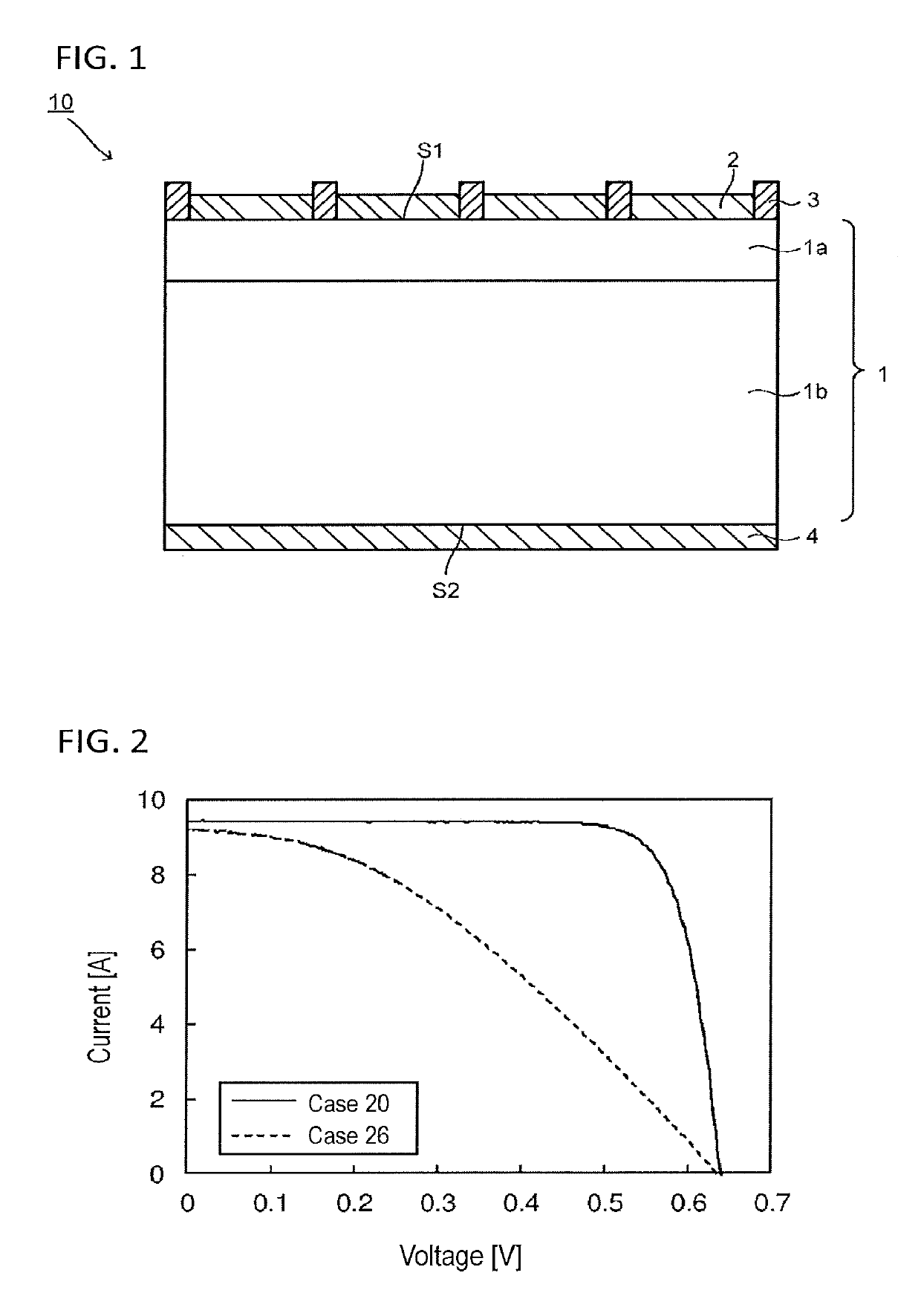Glass composition, glass powder, conductive paste, and solar cell
a technology of glass powder and conductive paste, which is applied in the direction of photovoltaic energy generation, non-conductive materials with dispersed conductive materials, semiconductor devices, etc., can solve the problems of deteriorating electrical properties and inability to stabilize the properties of solar cells, so as to achieve sufficient fluidity during sintering, increase the conductivity of the obtained electrode, and improve the effect of sintering
- Summary
- Abstract
- Description
- Claims
- Application Information
AI Technical Summary
Benefits of technology
Problems solved by technology
Method used
Image
Examples
examples
[0075]The present invention is described in greater detail below by referring to Examples, but the present invention is not limited to these. Cases 1 to 22 are Examples and Cases 23 to 27 are Comparative Examples.
(Cases 1 to 27)
[0076]A glass composition was produced as a thin plate-like glass by the following method, and a glass powder was produced from the thin plate-like glass. The particle size distribution of the glass powder was measured, and the glass transition temperature of the glass composition was measured using the glass powder.
[0077]Law material powders were blended to have the composition shown in Tables 1 to 3, mixed and melted for 30 minutes to 1 hour by using a crucible in an electric furnace at 900 to 1,200° C., thereby forming a thin plate-like glass composed of a glass composition.
[0078]In each of Cases, the obtained thin plate-like glass was milled with the combination of the dry milling and the wet milling as follows, thereby adjusting the particle size distrib...
PUM
| Property | Measurement | Unit |
|---|---|---|
| glass transition temperature | aaaaa | aaaaa |
| glass transition temperature | aaaaa | aaaaa |
| glass transition temperature | aaaaa | aaaaa |
Abstract
Description
Claims
Application Information
 Login to View More
Login to View More - R&D
- Intellectual Property
- Life Sciences
- Materials
- Tech Scout
- Unparalleled Data Quality
- Higher Quality Content
- 60% Fewer Hallucinations
Browse by: Latest US Patents, China's latest patents, Technical Efficacy Thesaurus, Application Domain, Technology Topic, Popular Technical Reports.
© 2025 PatSnap. All rights reserved.Legal|Privacy policy|Modern Slavery Act Transparency Statement|Sitemap|About US| Contact US: help@patsnap.com

